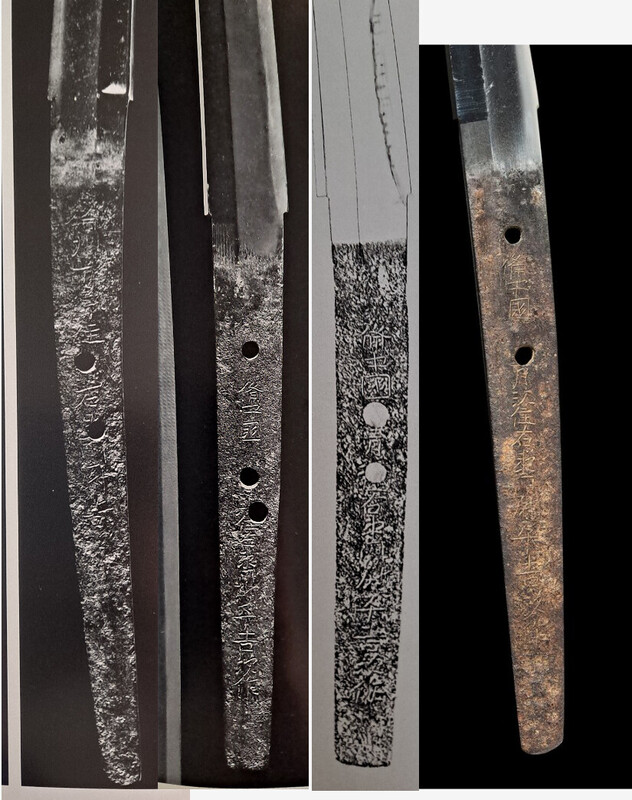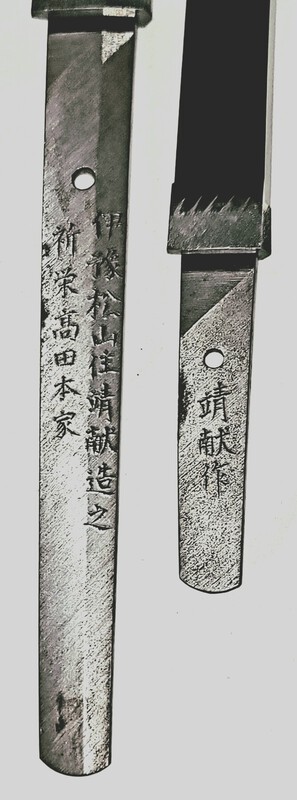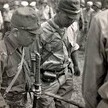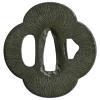Leaderboard
Popular Content
Showing content with the highest reputation on 05/23/2021 in all areas
-
Gendaito of the Taisho- and early Showa period.. esp. Shodai Minamoto Yoshichika and Nidai Minamoto Yoshichika and the art swords they made. https://www.hugendubel.de/de/buch_kartoniert/otto_maxein-samurai_swords_for_the_material_battle-40722416-produkt-details.html Best4 points
-
2 points
-
2 points
-
Hi Mike, From memory it looks like you have a stainless steel showato blade, made for the Navy by INABA. The little stamp on top is his and the three "script" characters say I- Na - Ba. I think his full swordsmith name was Inaba Kaneyoshi? members here know more than me on these swords so they will correct me if I am mistaken. Regards,2 points
-
The only thing that's really going on here is, about being able to tell the difference between a Showato and Gendaito. Stamps aside, one must learn to differentiate. Whilst discussing such, some information comes to light, however, it still comes down to one being able to examine a sword and being able to tell the difference. The only way to really learn this is, to examine as many swords as possible. As with all Nihonto, judge the blade first.2 points
-
Gary, An interesting little puzzle. The zaboshi are very much an indication that it is a helmet made in the province of Kaga. Orikasa Sensei spent a considerable length of time researching the archives in Kanezawa library and produced a list of all the armourers who worked for the Maeda family whose fief it was. He found that the Maeda, who were granted the province by Toyotomi Hideyoshi in 1583, only employed Haruta armourers until 1800 when the first Myochin was taken on. Sasama, in his Shin Katchushi Meikan lists 4 armourers who signed Iehisa, One of whom was a member of the Saotome group, two who were of the Haruta, the remaining one being a Myochin. The latter is listed as working in Yukinoshita in Sagami province around the Tenbun era, not Kaga, but Sasama adds that there is no extant piece bearing the name and doubts his existance. One final point is that the kanji Ie- is not at all usual among Myochin smiths, by far the majority using Mune- . Having said that, I have a helmet by a Myochin Ietsugu who was a Soshu smith. I haven't the list of Kaga armour makers to hand at the moment, they are on another computer. I will try and remember to look tomorrow. Ian Bottomley2 points
-
The tachi by Aoe Yoshitsugu is very interesting and I feel it would need lots of further studying. The signature of it seems to be slightly different from what was written in description, and I see it as 備中国青江住右衛門尉平吉次作 - Bitchū no Kuni Aoe jū Uemon no Jō Taira Yoshitsugu saku. The Uemon no Jō signature is extremely rare in tachi, I have only found 3 tachi signatures signed in this form (The Hie Jinja sword signature is listed as Saemon no Jō in some sources but Hie Jinja book has it as Uemon no Jō as well as several other sources too). The 3 swords that I have with this signature are Jūyō Bunkazai of Hie Jinja, Jūyō Bunkazai that is owned by Tokyo National Museum, and tachi from Jūyō 14 that I guess might be still in private ownership as I havent seen it anywhere else than that book. Here are the swords in order, Hie Jinja / Tokyo National Museum / Jūyō 14 / This auction sword. I cannot really comment on the pricing stuff as I just love the research aspect of collecting and not the financial side. And unfortunately it is above my skill to make guesses about the genuinity of the signature based on available factors. I do think it could be plausible with the pictorial evidence, the coloration of nakago in the auction pics might be bit different (older looking) in real life. I think also the Provenance of auction sword might attract hunters as it has been in Europe for a long time, and presumably avoiding being checked in Japan so far.2 points
-
2 points
-
Some of the collection belonged to one of the most important European sword collectors in history. Jean-Jacques Ruebell. Father was a general for Napoleon and his grandfather a general in the revolutionary war. He donated 350 European swords (he had all types) to the Met and basically seeded its arms and armor collection as a result. They wrote a lot of articles about him in the 20s and 30s. Since he was born rich and never had to work he devoted himself to sword collecting. Of all types and cultures. The 350 that he gave to the Met had items going as old as the 1300s. He liked small art items, as he collected other art too, but his idea was he wanted objects he could share with friends and people who visited him to show them or teach them or amuse them. As a result he had a lot of daggers and that extended to tanto. As various diplomats went around those that came back from Japan and found their way to Paris by diplomacy or retirement seem to have sold off items they had at House of Drouot and he was constantly there picking up whatever they brought. His own collection went out in 1933 and had many beautiful things (Shinkai daisho with Omori Eishu tosogu, Minamoto Masao daisho with Ishiguro tosogu, Awataguchi Yoshimitsu tanto, etc.) A very small bit of that auction in Paris were fractional parts of his collection held over since 1933 in another family. Back in 1933 though he sold off 2 Nobuie tsuba and 3 Kaneie tsuba and a lot of other nice things... maybe they are floating around Paris still today? Get to work Jean.2 points
-
1 point
-
Thank you Steve and John. I appreciate it very much. No clue what price to put on them as of yet but... hopefully something will give me a direction.. Thank you all once again John1 point
-
1 point
-
If you are talking about the other side, the inscription is 伊豫松山住靖献造之 祈栄高田本家 Iyo Matsuyama-jū Yasutate tsukuru kore Kiei Takada Honke The translation of that is Made by Yasutate of Matsuyama in Iyo Province / With prayers for the prosperity of the Takada family The front side is just 靖献作 (Made by Yasutate) You can find some more information about Yasutate in Markus Sesko's Index of Swordsmiths.1 point
-
Bruce That’s good news So let me repeat what you said Every RJT Sword submited that meet regulations and specifications described in this document was made of tamahagane I read the document and believe no star stamp was mentioned According to another document that was provided The army bought tamahagane and star stamp was proof that it was indeed tamahagane Thats where the confusion is why was the star stamp used on some RJT swords and not others? They also star stamped other items including a shovel which was kinda weird It seems we keep going around in circles about the star stamp !! Sorry don’t want to keep beating a dead horse! steve1 point
-
Bruce, WOW, thank you so much, sir! That's incredibly helpful. I've seen your name throughout these forums, and you always leave such helpful and insightful comments. I hope you know how kind and appreciated that is. Thanks again!1 point
-
1 point
-
1 point
-
1 point
-
Nice photos of shark skins and snake skins utilized in Gunto manufacture. Thanks again Bruce!1 point
-
I too have a somewhat similar really nice zaboshi kabuto, but I still hesitate to cut a hole in the ukebari to look for a signature.1 point
-
I had the same thoughts as Ian. Stylistically it does not really align with the working dates listed either.1 point
-
I tend to watch a lot of online auctions both through auction houses, eBay, and proxy bid services. If its a big name auction and they advertise well, the prices are vastly inflated over what I see elsewhere. Sometimes by a margin of 5-10x your average nihonto prices we see here. Of course, the sites/providers take a big fat cut of that hammer price.1 point
-
I am mostly referring to things like the unsigned wakizashi, etc. And a lot of the prices in this auction are still obscene displays of waste.1 point
-
Bruce What is the date (year) of the RJT document from Morita-san? On Nick Komiya's article is a date of 1943. I'm just wondering if folks are going a bit nuts over a stamp that was only used during the last approx.1.5 years of WWII? What about the other zillion or so swords made earlier since the Japanese re-militaration? Did the RJT regs apply earlier? I don't have any star stamps (no dog in this fight ), just curious. Rich1 point
-
I use mine about 50 times a day. From opening things to assisting with repairs, to cuttings nails, thread, cable ties, boxes....to a million other things. My gf carries one too...also says she can't get by without one. I think some of you guys who don't use one are the types that call an electrician to change a lightbulb. People have zero skills nowadays.1 point
-
Is the design the same both sides if it then Bushu If the design shows shows a front and the back of the item then Choshu1 point
-
1 point
-
No. Everyone needs to carry a knife. I use mine multiple times a day. Everyone I know carries one. None of them stab anyone. 60's/70's USA...every kid in the USA carried one. There was no knife crime. Look elsewhere.1 point
-
1 point
-
Wow, 19k for an unsigned wakizashi in a shirasaya. Someone clearly knew way more or way less than me.0 points





























